2021 was another big year for tech workers organizing for a greater say at their workplaces. This year, more workers took action to build lasting, enforceable structures to protect their rights. Across multiple industries, it was a record year for unionizing, and tech was no exception.
The year was also notable for whistleblowing incidents that captured the public’s attention and exposed companies including Facebook, Apple, and Tesla. While having the right measures in place to protect whistleblowers is an important part of holding the tech industry accountable, whistleblowing alone is not enough.
Unionization and informal collectives are essential tools for workers to build long-term power and fight for a real seat at the table. Notably, we saw a record number of unions at U.S. technology firms this year, including Glitch, Imperfect Foods, and the Alphabet Workers Union. The New York Times Tech Guild walkout marked the first instance of unionizing white collar workers stopping work over management’s conduct in the process of unionization.
More informal collectives also played a role. Employee resource groups played a prominent role in collective actions that supported Palestine at Google and Apple. The Trans* Employee Resource Group at Netflix was the main organizing force behind a highly publicized walkout protesting Dave Chapelle’s transphobic comedy special. Employee organized movements like #AppleToo used online channels to bring workers together even as many tech workplaces remained remote.
This year, we documented 69 instances of collective action in tech in the U.S. and 12 new unions in the industry. The below statistics are for the U.S. technology industry only. Here are some of the things we’ve learned from archiving this movement:
1. The number of reported collective actions by U.S. tech workers declined.
The number of reported actions by U.S. tech workers declined from 2019 highs but remained well above levels seen in previous years. We explore the trends behind these numbers below.

2. Declines were driven by a decrease in organizing by non-office workers– office workers organized at a higher rate than last year.
Office workers are still organizing at a high rate. The decrease in overall collective actions comes from non-office workers. 2020 was a banner year for organizing among non-office tech workers, driven in large part by covid-related protests among Amazon warehouse workers, Facebook content moderators, and others.
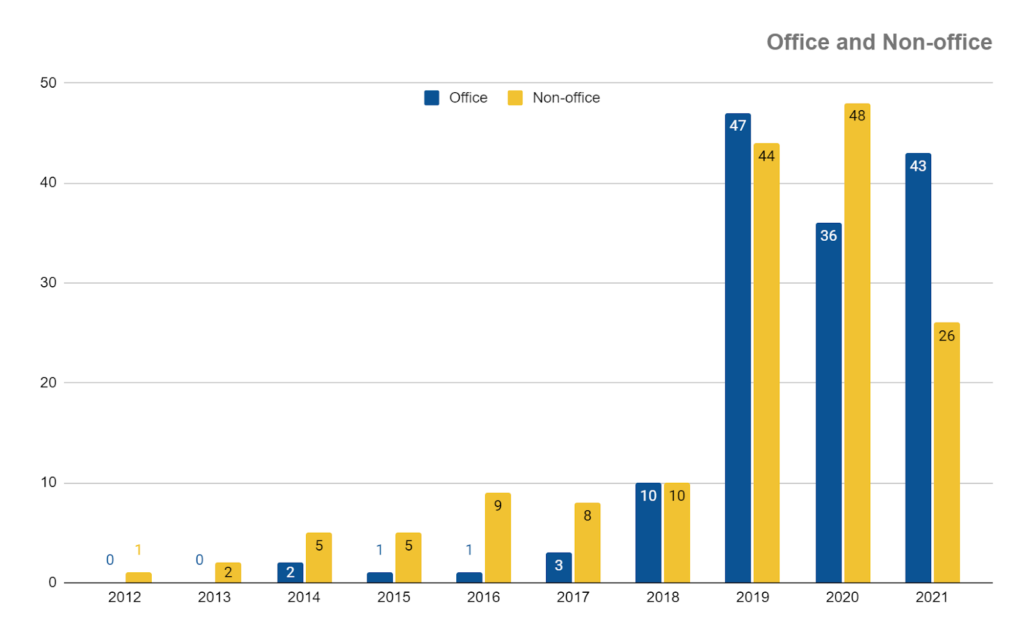
3. A record number of unions by office workers were started in the industry.
While the overall number of collective actions is decreasing, union organizing has increased across the industry with a record number of 12 tech unions formed this year
In 2021, office workers formed new unions at Alphabet, Mobilize, The New York Times, Catalist, Change.org, Code for America, EveryAction, Citizen App, Blue State, and NPR. Non-office workers at Imperfect Foods and HelloFresh also won recognition. Furthermore, workers at Glitch, The Ringer (Spotify), and Gimlet Media (Spotify) won union contracts this year, marking the first union contracts for office workers in the tech industry in recent years.
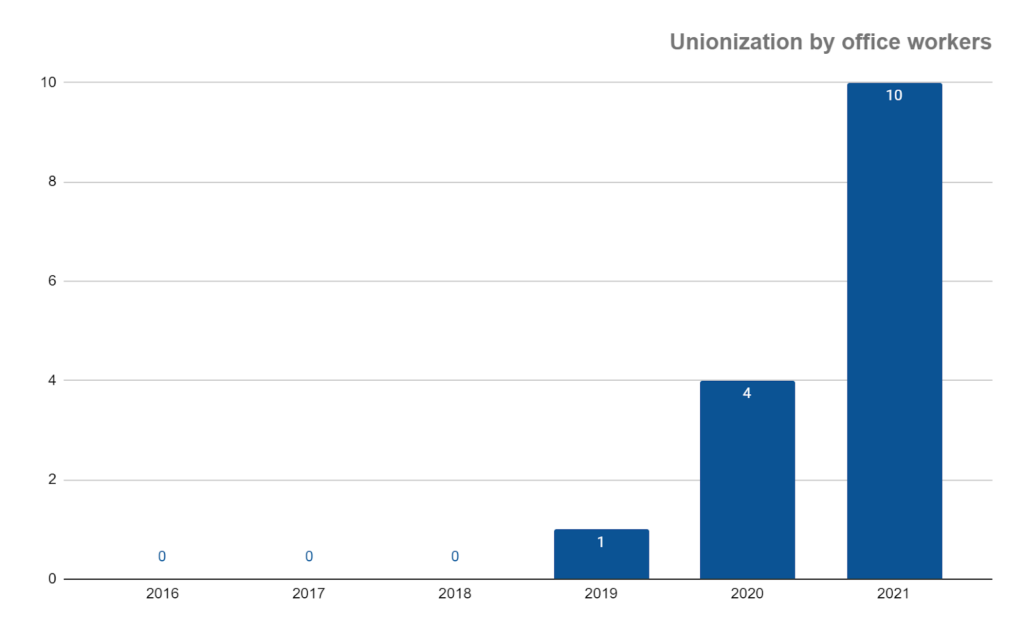
4. Alphabet and Amazon workers were more active than employees at any other company– and Apple workers began to speak up.
Amazon workers, especially warehouse workers, continue to lead the way in the total number of actions. In addition, there were 12 publicly reported collective actions at Alphabet this year, many organized by the Alphabet Workers Union, a minority union that started in January 2021.
One of the most surprising events in 2021 was a string of collective actions by employees at Apple, a company whose US-based workers had not previously participated in public activism. Workers that were part of the #AppleToo movement wrote an open letter calling on Tim Cook and the senior leadership team to follow through on its diversity, equity, and inclusion promises. The Alphabet Muslim Association called on the company to stand with the Palestinian community during Israel’s bombing of Gaza.
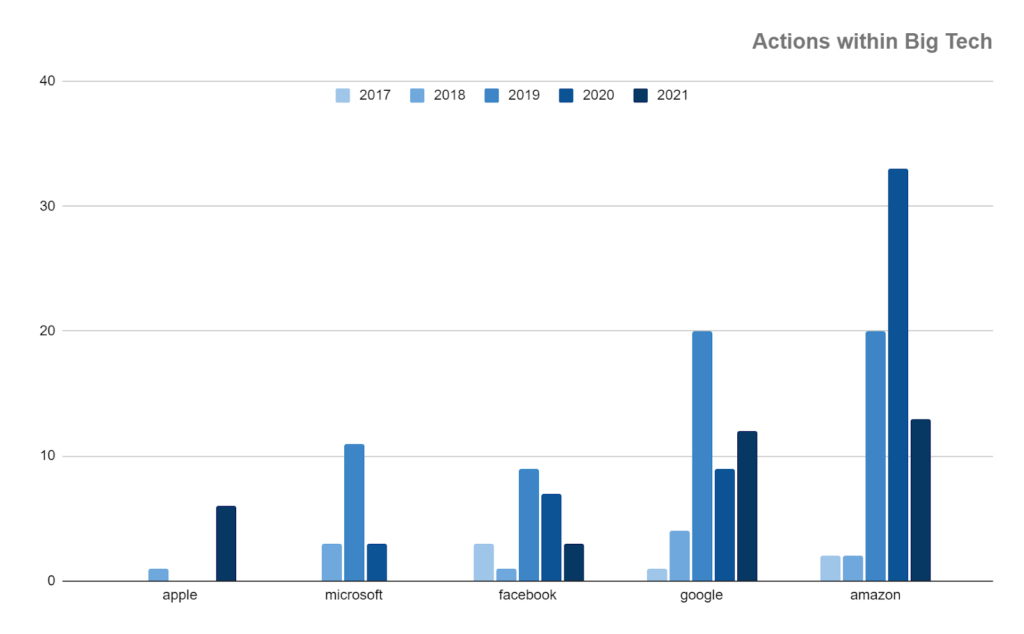
5. For the first time, collective actions at smaller companies outnumbered those at Big Tech.
This was also the first time in recent years that actions at smaller tech companies outnumbered those in “Big Tech,” a category that includes Alphabet/Google, Apple, Amazon, Facebook/Meta, and Microsoft. The number of collective actions outside of Big Tech remained consistent with the last two years, but we saw a drop off in activism at the largest tech firms.
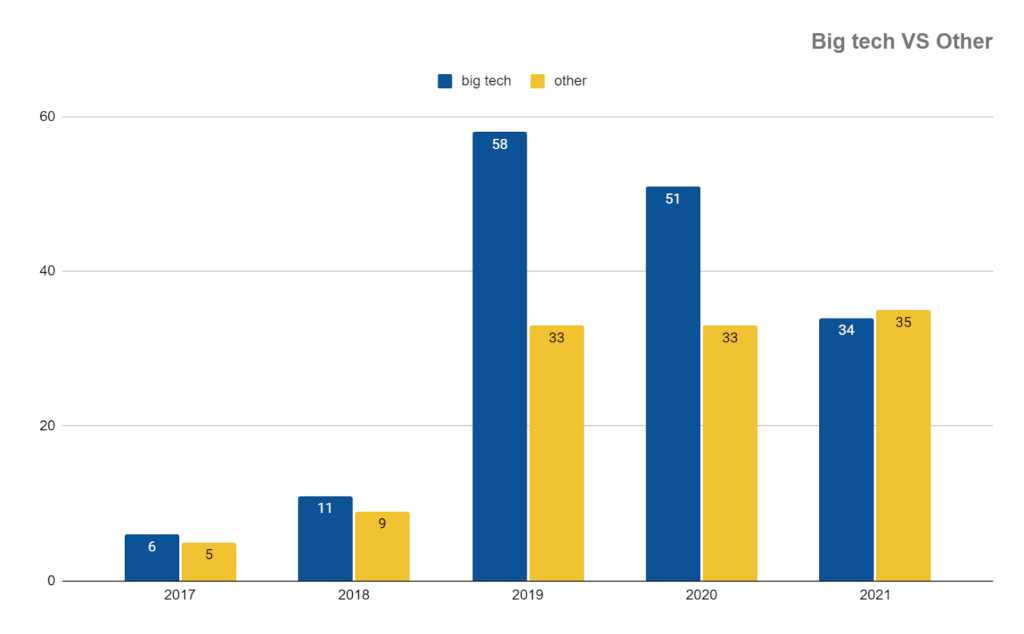
6. Racism, sexism, homophobia, and transphobia continued to drive worker organizing.
Discrimination on the basis of race, gender, and sexual orientation continued to drive a large portion of collective actions in tech.
In March, YouTube workers succeeded in getting the company to remove anti-Asian content from the website. In April, over 2,000 Alphabet workers signed a petition calling on the company to stop protecting employees with confirmed instances of sexual harassment. In October, Netflix workers walked out to protest Dave Chapelle’s transphobic comedy special, the first public instance of employee activism at Netflix since 2015.
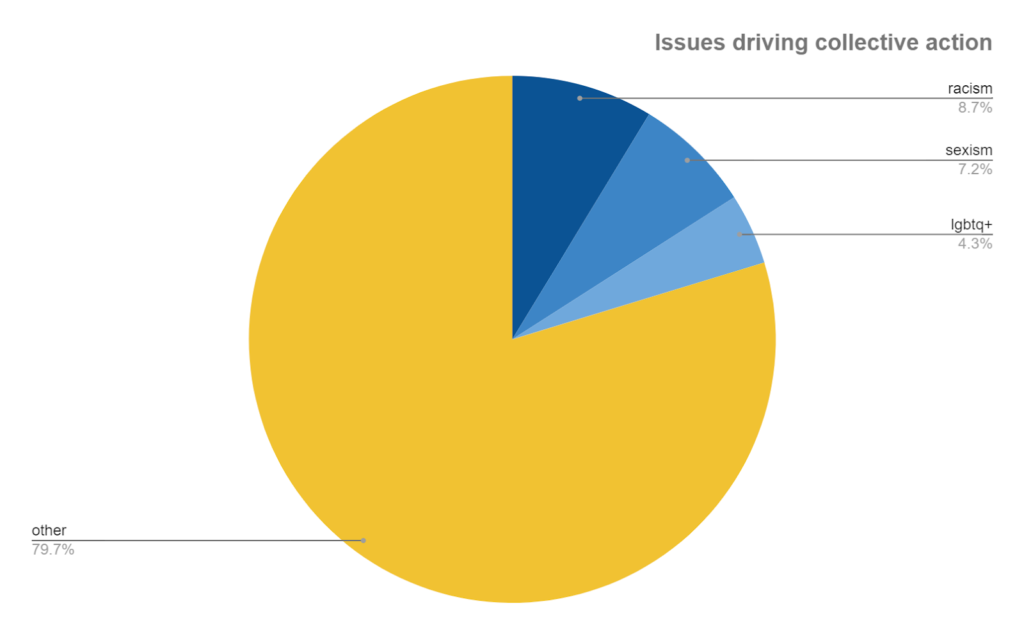
Visit the our dataset here: data.collectiveaction.tech
JS is a former tech worker and writes about tech, labor & China
-
JS Tanhttps://collectiveaction.tech/author/js/
-
JS Tanhttps://collectiveaction.tech/author/js/
-
JS Tanhttps://collectiveaction.tech/author/js/
-
JS Tanhttps://collectiveaction.tech/author/js/
Nataliya is a sociologist who researches tech and labor
-
Nataliya Nedzhvetskayahttps://collectiveaction.tech/author/nataliya/
-
Nataliya Nedzhvetskayahttps://collectiveaction.tech/author/nataliya/
-
Nataliya Nedzhvetskayahttps://collectiveaction.tech/author/nataliya/
-
Nataliya Nedzhvetskayahttps://collectiveaction.tech/author/nataliya/
Wynnie is a sociology major interested in researching labor
-
Wynnie Chanhttps://collectiveaction.tech/author/wynnie/
-
Wynnie Chanhttps://collectiveaction.tech/author/wynnie/
-
Wynnie Chanhttps://collectiveaction.tech/author/wynnie/
